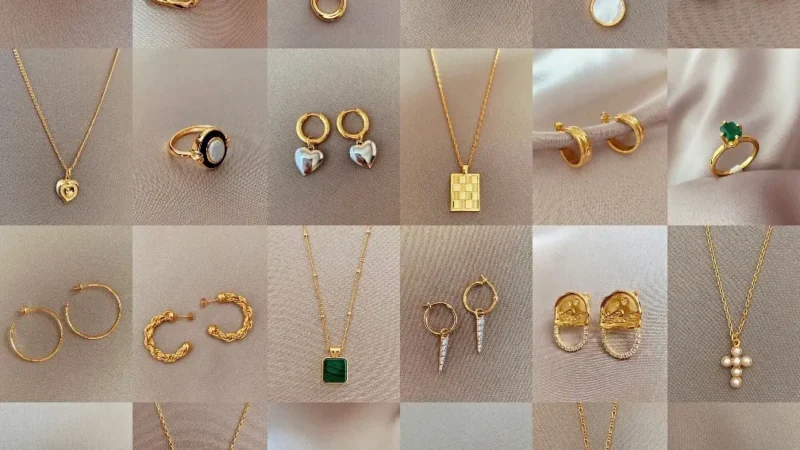Bracelet Jewelry Craftsmanship: An Exploration of Diverse Techniques

Jewelry making is an ancient craft that requires artistic vision, meticulous technique, and expert craftsmanship. Bracelets in particular allow for stunning designs that adorn the wrist in elegant style. In this blog post, we’ll explore some of the most common patterns and methods used in bracelet creation that result in beautiful, unique pieces.

Beadwork
Beadwork is likely the oldest and most universal technique used in jewelry. By stringing beads of various shapes, sizes, and materials, endless design possibilities open up. Common bead types include:
- Glass – Glass beads reflect and refract light in dazzling ways. Varieties include crystal, lampwork, sequins, and more.
- Wood – Natural wooden beads made from timbers like ebony or bamboo add organic beauty.
- Ceramic – Clay beads can be molded into any shape and decorated with colors and textures during firing.
- Metal – Precious metal beads like gold and silver, or pewter add shine.
- Stone – Semiprecious stones like turquoise, lapis lazuli, onyx, etc. create natural elegance.
Bead stringing patterns involve simple to complex designs. For example, alternating between two beads creates visual rhythm. Using graduated bead sizes lends depth. Clustering colorful beads adds focal points. Braiding interwoven beads result in textures. The options are endless.
Wirework
Wire allows jewelry makers to sculpt and shape designs not possible with bead stringing alone. Fine jewelry wire comes in different metals like gold, silver, copper, and more. Wire can be bent, coiled, twisted, and woven to create bracelet foundations or decorative elements.
Common wirework techniques include:
- Wrapped loops – Bending wire back on itself in a loop, then wrapping it around the base to secure. This makes links to attach charms, beads, etc.
- Chainmaking – Connecting jump rings, figure 8’s, spirals, and other shaped links.
- Weaving – Interlacing wire in and out to create cuff foundations or decorative panels.
- Coiling – Wrapping wire around a base rod to create spring-like shapes.
Wire allows for flexibility and durability in bracelet designs. It can be combined with beads or fabric for innovative styles.
Charms
Adding charms is a go-to way to make bracelets more personalized. Common charm materials include:
- Gold/silver – Precious metal charms often use motifs like hearts, stars, geometric shapes, etc.
- Crystal – Swarovski crystal charms sparkle beautifully.
- Enamel – Metal charms can be enameled with color using glass powder firing.
- Wood – Laser cut wooden charms allow for intricate shapes.
- Polymer clay – Lightweight charms can be sculpted from polymer clay in any form.
Charms convey meaning through their shapes and compositions. For example, a silver owl charm can symbolize wisdom. A crystal lotus charm could mean new beginnings. Personal charms like a birthstone, initials, or zodiac sign add sentiment.
Charms are attached to bracelets using loops, chains, jump rings, or integrated into the design. Clustering 3-5 charms together creates visual interest.
Weaving/Knotting
Fiber arts offer infinite possibilities for bracelet designs. Different materials can be woven, knotted, braided, embroidered, and combined. Common choices include:
- Leather – Leather cording comes in many colors. It’s durable and ages beautifully.
- Silk/Rayon – Shimmery silk or rayon threads add sheen.
- Cotton – Embroidery floss allows for colorful designs.
- Hemp – Natural hemp has an organic look.
- Synthetic – Nylon cording is strong and inexpensive.
Simple square or diagonal knots make up the popular friendship bracelet style. More complex versions involve beadweaving where fiber is stitched through bead holes in patterns. Macrame incorporates knotting with embellishments. Rigid bracelet forms can be covered in knot work or embroidery for surface interest.
Metalwork
Jewelry metalsmiths use varied cold joining techniques to shape, texture, and form bracelets. Common methods include:
- Casting – Molten metal is poured into a mold then carved once hardened into a bracelet shape.
- Soldering – Silver solder is used to fuse metal pieces together.
- Riveting – Precise hammering secures plain or textured sheet metal layers together.
- Stamping – Metal sheets are imprinted with lettered motifs using steel stamps and a hammer.
- Etching – Chemicals or laser technology etch designs onto a metal surface.
Metalsmiths also perfect finishes like patination which forces oxidation to darken copper and bronze. Materials like leather or stone can be incorporated into metalwork designs by riveting or wire wrapping. This takes skill to execute cleanly.
Resin
Liquid resin offers creative ways to embed and seal meaningful items in bracelets like flowers, photos, seeds, glitter, etc. Common technique steps include:
- Choose inclusions like dried flowers and place in mold.
- Mix 2-part resin according to directions.
- Pour resin slowly over items to prevent bubbles.
- Let cure fully, sometimes up to 24 hours.
- Remove bracelet carefully from mold.
- Attach findings like clasps or cord ends.
- Seal and protect surface with clear spray.
Resin bracelets capture sentimental elements in a permanent keepsake. Different tints can be added to the resin before pouring for color. Glitter and micro beads also add interest. The clear surface creates a water-like effect.
Conclusion
Whether incorporating beads, wire, knots, metal, or resin, bracelet craftsmanship requires thoughtfulness in the design process and skill in execution. Knowing the possibilities and limitations of different materials is key. A meticulous attention to detail elevates a handmade bracelet into a truly special piece of wearable art. With practice and passion, jewelers can create stunning bracelets using time honored techniques as well as innovative new approaches.




